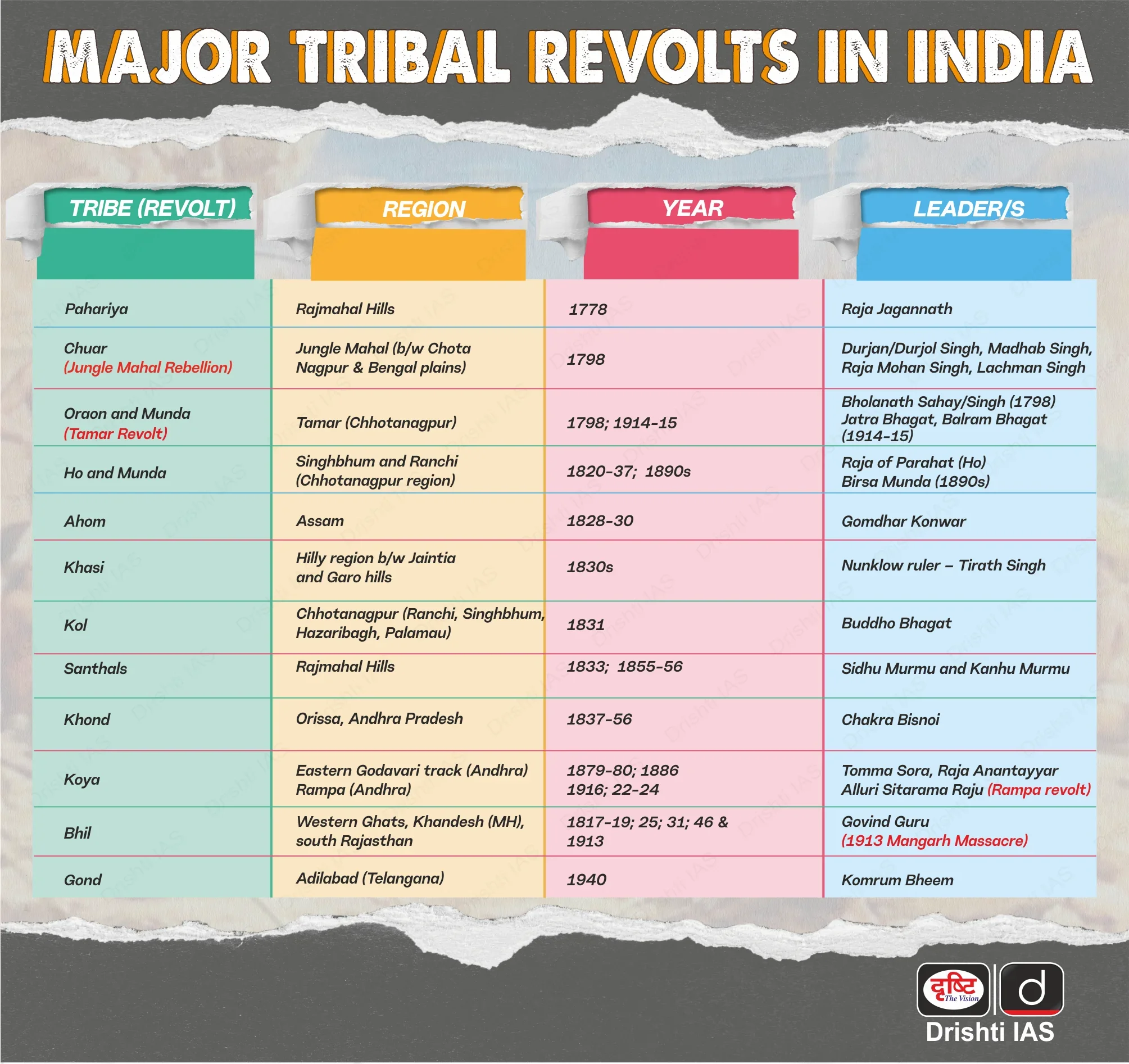Rapid Fire
Hul Diwas
- 01 Jul 2025
- 2 min read
The Prime Minister paid a heartfelt tribute on Hul Diwas (30th June), commemorating the start of the Santhal uprising and honoring the legacy of Sido-Kanhu, Chand-Bhairav, Phulo-Jhano, and other tribal martyrs who resisted colonial oppression.
Santhal Uprising
- About: Santhal Hul was a tribal revolt and India’s first structured war against British oppression, launched in 1855, two years before the 1857 Revolt, aimed at resisting economic exploitation and land alienation.
- Leaders & Unity: Led by Sidhu and Kanhu, the revolt united 32 castes/communities, showcasing rare tribal solidarity against colonial forces.
- Roots of Rebellion: It was sparked by the 1832 Damin-i-Koh settlement in the Rajmahal hills, where Santhals (displaced from Bengal) faced land-grabbing, bonded labour (kamioti/harwahi), and systemic oppression by British-backed zamindars.
- Impact: It led to the passage of Santhal Parganas Tenancy Act, 1876 (SPT Act) and later Chota Nagpur Tenancy Act, 1908 (CNT Act).
- The SPT Act (1876) prohibits transfer of Adivasi land to non-Adivasis, ensuring Santhal land rights, while the CNT Act (1908) restricts sale of Adivasi and Dalit land, allowing transfers only within the same caste and area with Collector's approval.
Santhal Tribe
- About: Originally from Birbhum and Manbhum (now West Bengal), Santhals migrated due to the 1770 Bengal famine and British policies, later settling in Damin-i-Koh (Jharkhand) under the Permanent Settlement Act (1790) for revenue farming.
- Demographics: Santhals are India’s 3rd-largest Scheduled Tribe (after Gonds and Bhils), mainly residing in Jharkhand, Bihar, Odisha, and West Bengal.
- Culture & Religion: They celebrate agriculture-linked festivals like Sohrai, Baha, and Karam, speak Santhali (8th Schedule language), and use the Ol Chiki script.
| Read More: Santhal Hul of 1855 |







